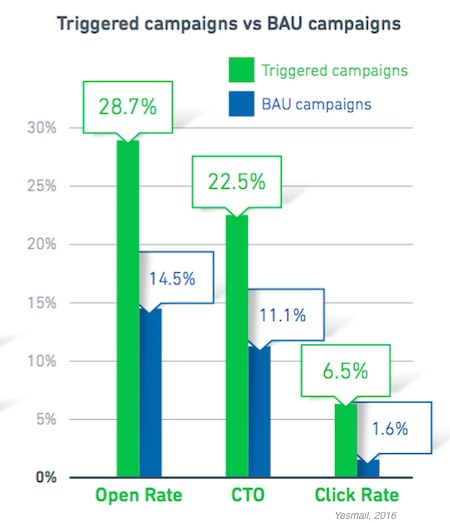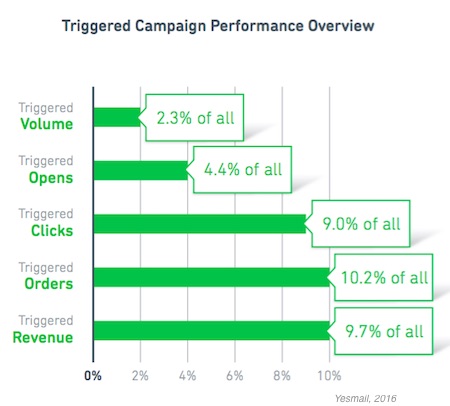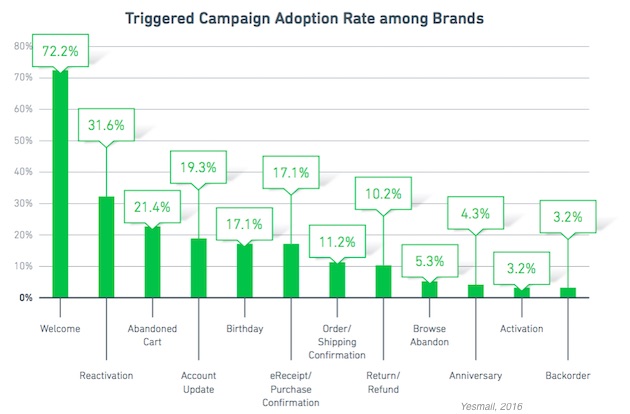Triggered email campaigns receive significantly more engagement than other types of messages, yet they are still not widely used by brands, according to recent research from Yesmail.
The report was based on data from 24 billion emails sent in 2015 by Yesmail customers.
Triggered emails were defined as messages sent by brands based on specific consumer actions (signup, cart abandonment, purchase, etc.) or events (weather, location, birthday, etc.).
Triggered emails garner significantly higher open rates, click-to-open (CTO) rates, and click rates, on average, compared with business-as-usual (BAU) emails, the analysis found.

Triggered emails made up just 2.3% of all the messages examined by the researchers. However, they were responsible for 4.4% of all opens, 9% of all clicks, and 9.7% of all revenue.

Welcome emails are the most popular triggered message type, deployed by 72.2% of brands. Reactivations are next (31.6% of brands sent them), followed by abandoned cart emails (21.4%).

About the research: The report was based on data from 24 billion emails sent in 2015 by Yesmail customers. Triggered emails were defined as messages sent by brands based on specific consumer actions (sign-up, cart abandonment, purchase, etc.) or events (weather, location, birthday, etc.).




